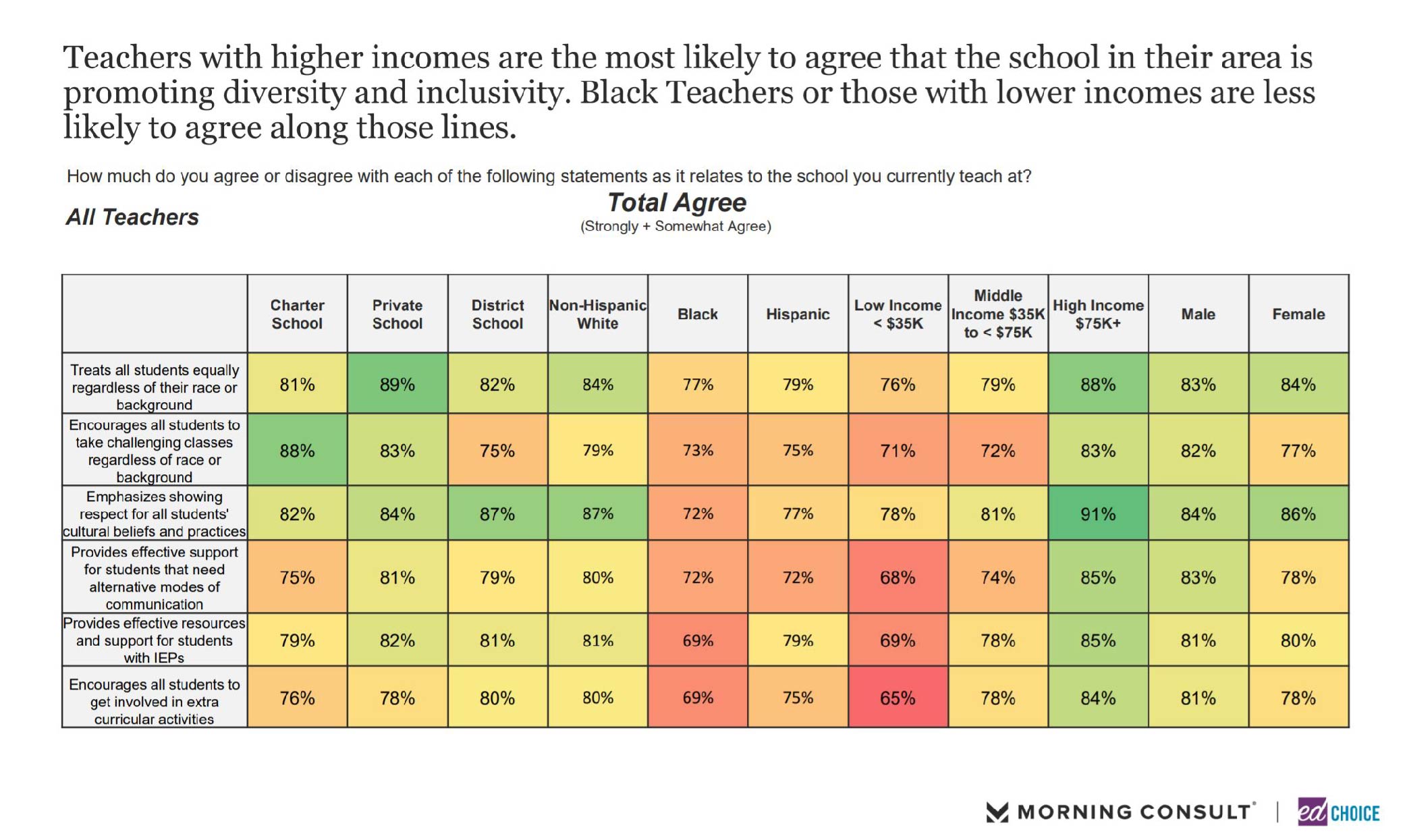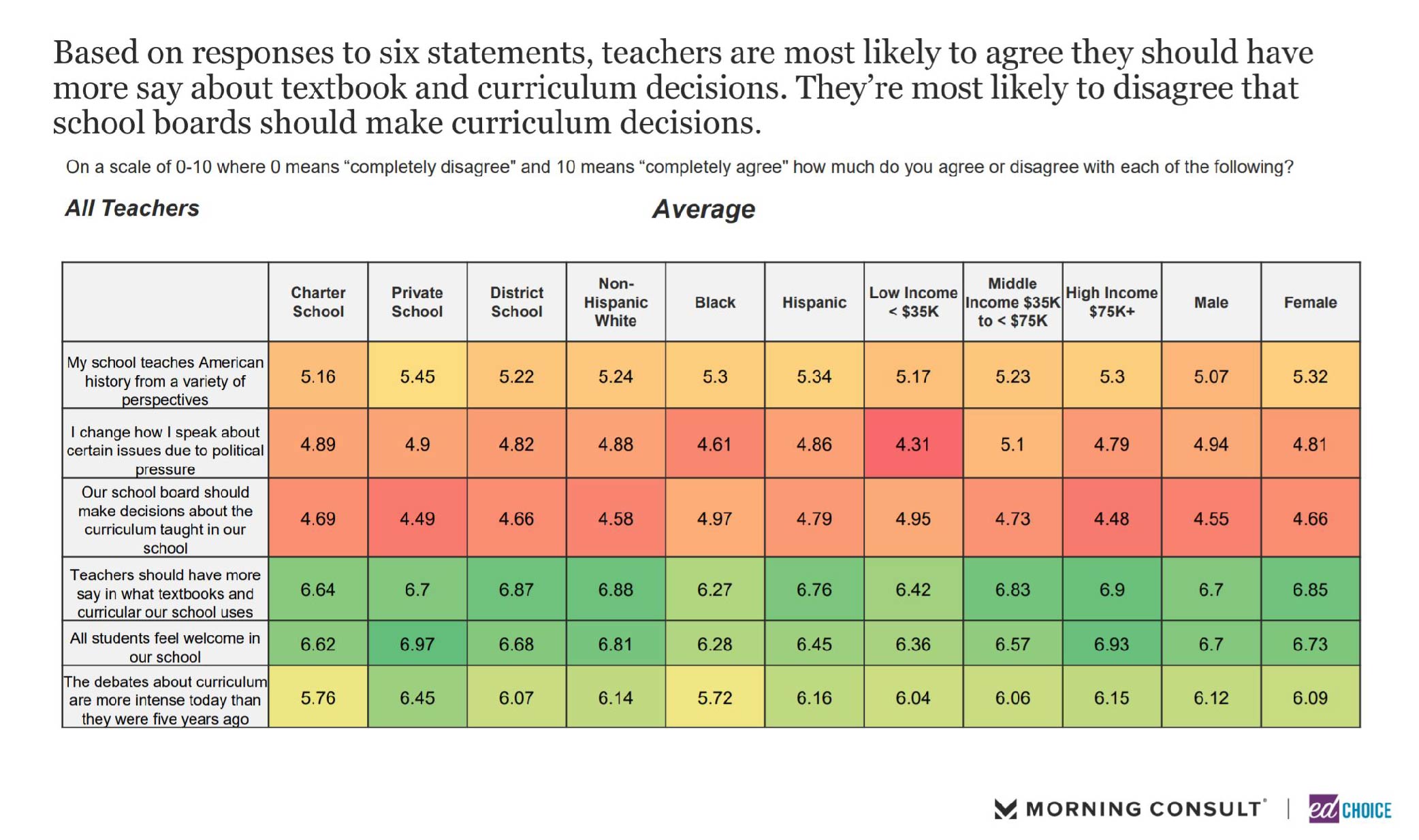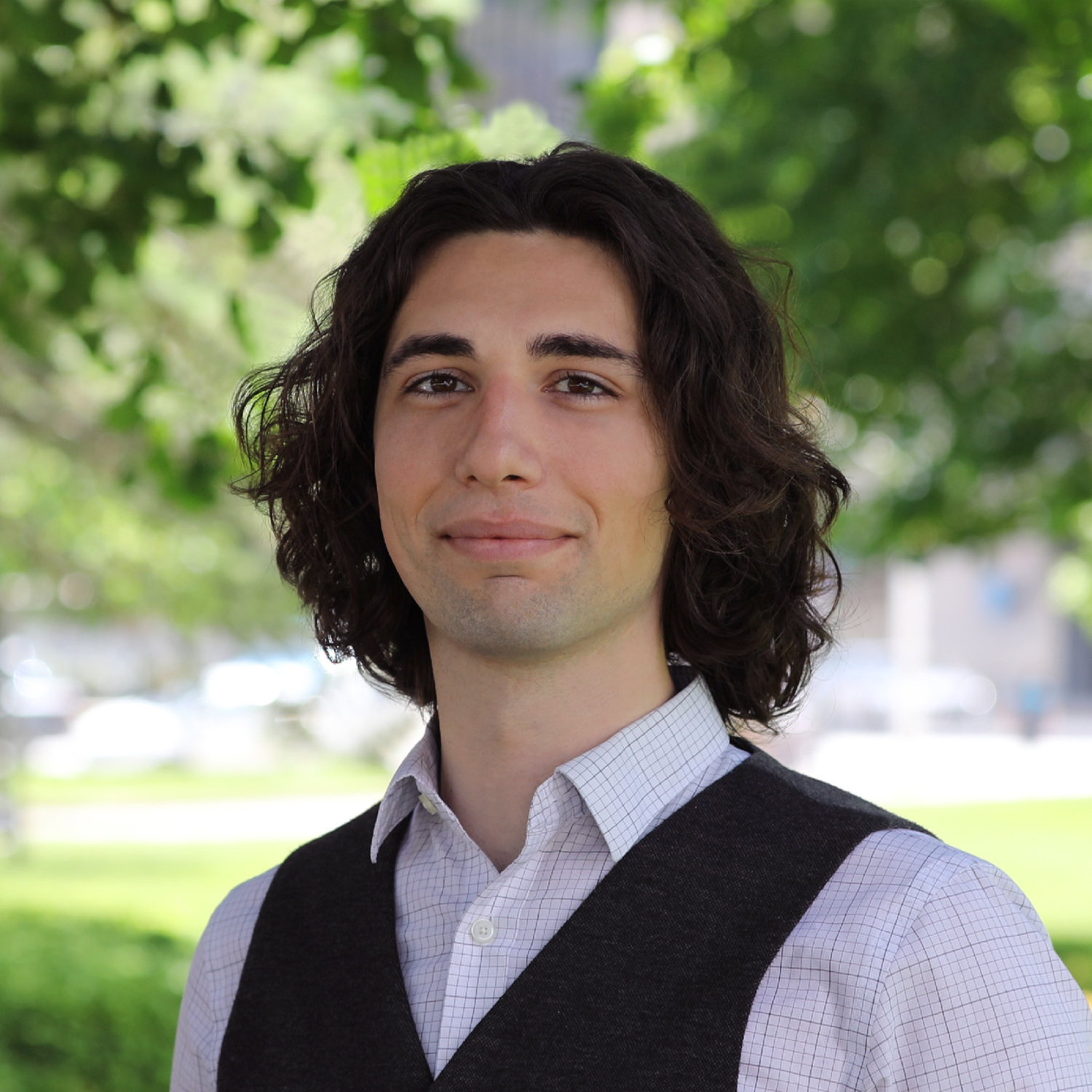Public Opinion Tracker: Teacher Survey Top Takeaways Q2 2021
With summer break in full force, teachers have had some time to reflect on a highly volatile academic year. As fall rapidly approaches, teachers also are turning their attention ahead to a new school year. With COVID-19 vaccinations widespread and potential approval for use among younger students on the horizon, many are looking at the 2021-22 year with much less trepidation than they felt going into 2020-21. K-12 education also has had a national spotlight this summer, with debates over curricula dominating newspapers and school board meetings across the country.
In addition to our monthly surveys of parents and Americans more broadly, we want to know the opinions, preferences, and needs of teachers, with whom we connect quarterly. Our most recent survey was conducted June 11-30, 2021 from a nationally representative sample of 1,001 teachers in the United States.
In a nutshell: Teachers are ready to go back to the classroom—they feel safe, and they much prefer it to alternative teaching locations. Teachers are not very likely to rate their students’ development very highly, but most feel that their students are ready for the next grade in 2021-22. Teachers remain interested in pods and tutoring, but their preferred compensation has risen dramatically since March and now exceeds what we’ve observed as parents’ willingness to pay for those services. Teachers are very optimistic about various resources’ ability to help students next year, especially mental health support and tutoring. Most teachers feel like their school practices inclusivity, and most teachers continue to support three major school choice policies. A majority of teachers over age 55 are considering retirement, and a large portion of younger teachers are considering leaving the profession.
1. Teachers feel comfortable in the classroom and would prefer to be there. Teachers’ comfort with in-person education increased substantially from March to June, with 84 percent of teachers at least somewhat comfortable with returning to school. Those with at least 10 years of teaching experience were noticeably more likely to indicate strong comfort with going back to the classroom than their less-experienced counterparts. Regardless of school type sector, teachers shared similar comfort levels for returning to school in person.

While the vast majority of teachers feel comfortable teaching in a classroom this fall, not all of them would prefer to be there all five days of the school week. Just over half of teachers said their ideal school week involved all five days of teaching occurring at their school, and the remaining 48 percent most preferred spending at least one day each school week teaching away from the classroom. Eighteen percent preferred one day per week outside of school, another 18 percent preferred two days, and the remaining 14 percent wanted to teach between three and all five days outside of the classroom every week.

2. Relatively few teachers think their students progressed very well last school year. Less than one out of every five teachers said their students were progressing “very well” academically, emotionally, or socially, which is consistent with results from our March survey. Also reflecting our March surveys, teachers were substantially less likely than parents to rate their students’ progress very highly.

We also asked teachers to estimate how many of their students were fully ready to move on to the next grade come fall. Less than a third of teachers thought 81-100 percent of their students were prepared to join the next grade. One out of every five teachers indicated less than 40 percent of their students were ready. Private school teachers were most optimistic about their students’ preparedness. Charter school teachers were the least optimistic despite being the group most likely to rate their students’ academic progress very highly.

3. Teachers remain interested in pods and tutoring, but would require much more compensation than they indicated in March. Sixty percent of teachers said they were at least somewhat interested in teaching for a learning pod, slightly higher than results we saw in March. As with our last teacher survey, charter and private school teachers were much more likely to be interested in pods than district school teachers.

While interest remained high, the amount teachers said they would charge parents organizing a pod more than doubled. In March, parents were willing to pay more than twice as much per child per month than teachers said they would require. This month, teachers’ average per-child fee would be $73 per child per month more than parents’ average willingness to pay.

Similarly, teachers indicated substantial interest in tutoring students outside of school hours, be it through their school or organized by themselves. As with learning pods, the amount teachers said they would ask parents to pay more than doubled since March, also exceeding the average amount parents indicated they would be willing to pay for tutoring.



4. Teachers are even more optimistic about the ability of various resources to help students next school year than parents. For a few months, we asked both parents and non-parents how helpful they thought eight different resources would be to students in the upcoming school year. Parents consistently rate the resources more highly than the general population. Teachers rate resources even higher than parents. However, teachers and parents differ on what resources they rate most highly. The favorite resources among teachers are mental health supports and afterschool tutoring programs, which rank fourth and fifth among parents.

5. Teachers are more positive about their school’s inclusivity than parents. The vast majority of teachers agreed with six different statements about their schools’ practices regarding cultural respect, racial equity, and other matters of diversity and inclusivity. For each of these questions, more teachers were positive about their school than parents were.

Demographics affected the strength of positivity. As with parents, white teachers were noticeably more likely to say their school demonstrates inclusivity and equity than Black parents. There was a strong link between income and perceptions of inclusion and equity, as teachers with household incomes over $75,000 per year are substantially more likely to rate their schools positively than teachers with household incomes under that amount.

Relatedly, teachers indicated a desire to have a greater say about curriculum they use, and teachers were most likely to disagree with the idea that school boards should make decisions about curricula used at their school.

6. Majority support for school choice remains strong. Total support for charter schools and ESAs remained stable from first to second quarter, sitting at 61 percent and 74 percent, respectively. School vouchers saw a slight uptick in strong support from teachers, and total support now sits at 54 percent.







